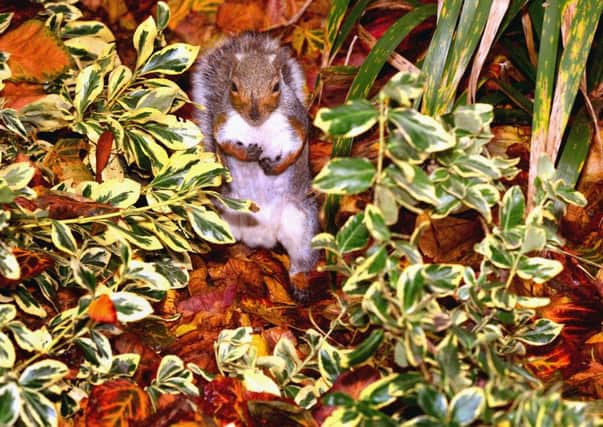Picture Post: The art of squirrelling away food for a rainy day


But whatever you think of squirrels they have become an integral part not only of our countryside, but also our urban parks, woods and gardens.
While red squirrels are now a rare sight in the UK, with Scotland, the Lake District and parts of Northumberland their last big strongholds, grey squirrels, on the other hand, have become one of our most familiar, and in some cases, tamest wild animals.
Advertisement
Hide AdAdvertisement
Hide AdThey are frequent visitors to gardens with bird tables and feeders, much to the annoyance of bird enthusiasts (the ingenious little creatures even manage to find a way though anti-squirrel cages).
The non-native greys certainly have a less cuddly reputation than their smaller red cousins. As well as raiding bird feeders they have been known to chew through plastic bins, while one of their more destructive habits is chewing the bark off trees to get to the fleshy green wood underneath. This can sometimes kill the tree and makes squirrels unpopular with foresters.
They can also carry the squirrel parapox virus which is fatal to our native red squirrels.
But despite the fact they are classified as vermin, many people still have affection for them, and when you see this picture of a grey squirrel foraging among the fallen leaves in the Yorkshire Museum Gardens, it’s perhaps easy to see why.
Advertisement
Hide AdAdvertisement
Hide AdDuring the autumn months squirrels spend much of their time seeking out and then burying acorns and nuts, which they do to ensure they have enough food for the winter months when there are more slim pickings.
They can usually find the buried food again by using their strong sense of smell. So if you find pine cones nibbled to the core its a sure sign that squirrels are about.
Whether we like them or not, grey squirrels are now as familiar to us robins or magpies, and the fact is our gardens and woodlands wouldn’t be the same without them.
Technical details: Nikon D800 camera with an ISO of 640 and an 80-200mm lens at 92 mm with an aperture of 1/250th sec at f8.